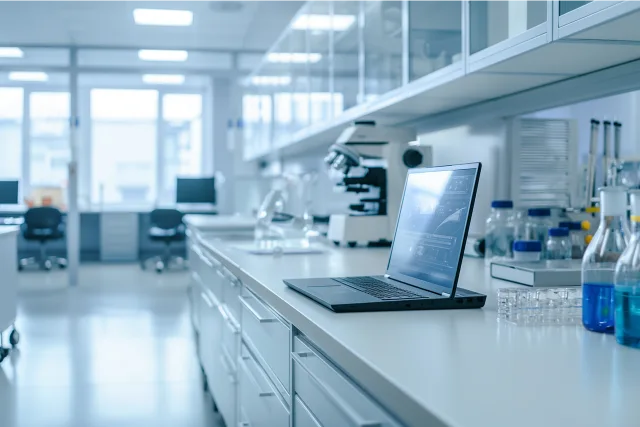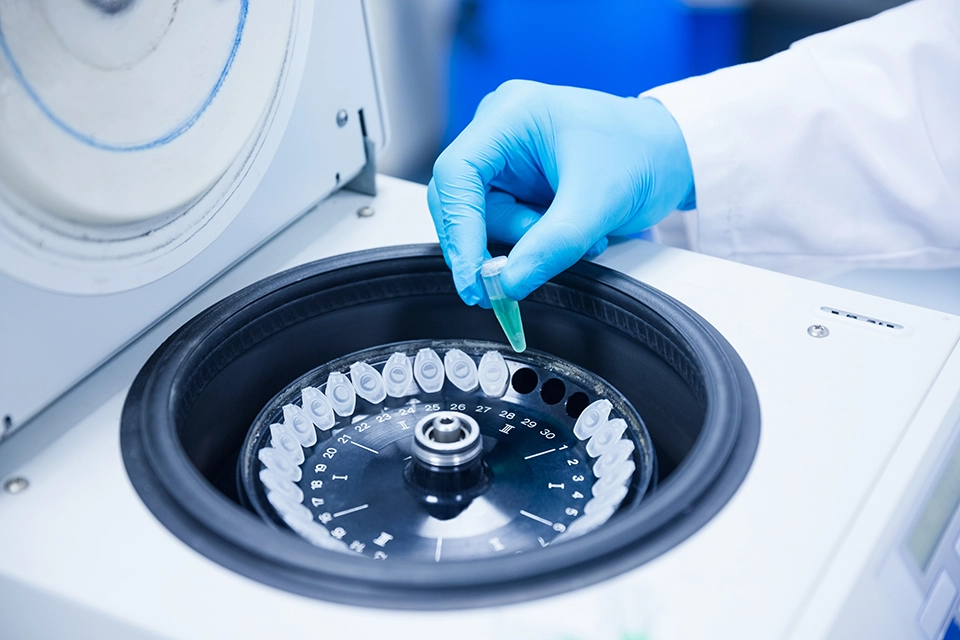Quick Summary: Evaluating Lab Equipment Financing Options for Startups Choosing the Right Funding Tool
- Lab equipment financing options for startups
- Equity is powerful but expensive and dilutive
- Debt can bridge capital but adds fixed obligations
- Leasing is flexible, fast, and preserves equity
- The smartest founders match the tool to the timeline and asset
Exploring Lab Equipment Financing Options for Startups
Scientific startups are built on inflection points: technical proof, clinical validation, commercial traction. To survive those jumps, you need capital.
But not all capital is created equal—and not every dollar should be treated the same. And that means understanding lab equipment financing options for startups.
Startups in biotech, diagnostics, and lab-heavy clean tech often default to equity or venture debt to fund lab buildouts or equipment procurement. That can work, but it’s not always the smartest move.
Many founders dilute too early or over-leverage for things like mass specs, LC/MS, ICP-MS, and automation platforms—even though they can finance them more strategically.
This post breaks down lab equipment financing options for startups, including the trade-offs between equity, debt, and leasing, so you can preserve ownership, protect runway, and make smarter capital decisions.
When to Use Equity, Debt, or Leasing in a Lab Startup
Question: What is the best financing option for a startup?
Let’s define the three lab equipment financing options for startups:
Equity
You sell a percentage of your company in exchange for capital. No repayment required—but dilution is permanent.
Used for: R&D, headcount, go-to-market, long-term strategic investments
Pros:
- No monthly payments
- Can bring strategic value (from investors)
Cons:
- You give up ownership (dilution)
- It’s expensive if used for short-term needs
- Terms can be complex and timeline-gated
Debt
You borrow money (term loans, venture debt, credit lines) with interest.
Used for: Working capital, inventory, bridge rounds
Pros:
- No dilution
- Faster than equity
- Predictable repayment
Cons:
- May require covenants or collateral, often in the form of a blanket UCC filing
- Interest accrues even if science stalls
- Monthly payments can strain early cash flow
Leasing
You finance specific assets (e.g. lab equipment) over time.
Used for: Instruments, automation, site buildouts
Pros:
- No dilution
- Lower monthly cost than debt
- Preserves cash for operations
- Often includes service, install, and freight
Cons:
- Asset ownership isn’t automatic. With a capital lease, you usually own the equipment at the end. With an FMV lease, you’ll need to buy it at fair market value if you want to keep it
- Some lenders may require personal or corporate guarantees, depending on the structure
What is the minimum credit score for equipment financing? See “How to launch a testing lab without a credit history”.

The Biggest Mistake: Using Equity for Equipment
Many startups use high-cost capital (equity) to fund short-term, depreciating assets (like lab instruments).
That’s like using a 30-year mortgage to buy office furniture.
When it comes to lab equipment financing options for startups, equity is best reserved for growth. Leasing is designed for operations.
If you raise $5M and spend $500K on equipment, you’ve given away part of your company to own tools that:
- Depreciate within 2-5 years
- Might be obsolete in 18 months
- Could have been leased for $10-15K/month
Your early equity is your most expensive and scarce resource. Use it for what increases enterprise value-team, data, IP.
So when it comes to lab equipment financing options for startups, let’s explore non-dilutive financing strategies.
External Resource: Startup Equity 101: Who Gets What Slice of the Pie
When Venture Debt Makes Sense (and When It Doesn’t)
How hard is it to get equipment financing?
Venture debt can extend runway or bridge rounds—but it’s not always startup-friendly.
Lenders often require:
- Institutional investor participation
- Monthly payments, even if R&D stalls
- Financial covenants and board approvals
Using debt to buy fixed assets introduces repayment risk without operational flexibility.
Leasing, by contrast, ties repayment to the asset itself. It’s easier to restructure, return, or upgrade equipment as your lab evolves.
Silicon Valley Bank’s guide to what venture debt is.
Why Leasing Lab Equipment Is Smart for Startups
Leasing isn’t a fallback. It’s a strategic, capital-efficient way to:
- Acquire instruments like LC/MS, GC/MS, ICP-MS without upfront CapEx
- Preserve equity for hiring, IP, and growth milestones
- Align lease payments with grants, contracts, or revenue timing
- Adapt quickly if protocols, team size, or market focus shifts
At Bold View Capital, we build leases around startup science. Our team:
- Structures step-up payments around grant awards or revenue events
- Includes early buyout options for startups that raise ahead of plan
- Bundles installation, warranty, and delivery to reduce CapEx friction
See how leasing supports smarter cash flow.

Equity vs. Debt vs. Leasing: Side-by-Side Comparison
| Funding Tool | Best Used For | Costs | Dilution? | Flexibility | Speed to Access |
| Equity | Team, IP, GTM | High | Yes | High (post-close) | Slow (months) |
| Debt | Working capital, bridge rounds | Medium | No | Medium (covenants) | Medium (2–4 weeks) |
| Leasing | Equipment, lab buildouts | Low | No | High (you can customize terms) | Fast (2–5 days) |
Example: How a Diagnostics Startup Chose Leasing
Startup: Series A-stage diagnostics company
Need: Two LC/MS systems + automation platform for CLIA readiness
Options:
- Buy outright for ~$400K using equity = 8% dilution
- Use venture debt with 36-month term = $13K/month with possible conversion to equity with dilution
- Lease over 36 months = $12.8K/month, no dilution, includes service + install
Outcome: When it came to lab equipment financing options for startups, this company chose leasing, protected ownership, and preserved equity for hiring and marketing. They closed their first CLIA contract 60 days faster thanks to rapid installation—and retained an early buyout option in case of Series B success.

When Should Startups Use Equity, Debt, or Leasing?
Let’s summarize what we know about lab equipment financing options for startups.
Use Equity when:
- You’re investing in IP, team, or long-term moat
- You don’t want monthly obligations
- You need strategic investor support
Use Debt when:
- You’re bridging capital between rounds
- You have predictable revenue or grant flow
- You can absorb fixed repayments
Use Leasing when:
- You need instruments, but don’t want capital shocks
- You want to align costs with scientific milestones and revenue
- You’re scaling labs, building sites, or validating methods

FAQs: Lab Equipment Financing Options for Startups
Q: Should I use equity to fund lab equipment?
Only if that equipment directly increases your valuation. Otherwise, lease it.
Q: What’s the difference between venture debt and leasing?
Venture debt impacts your entire balance sheet. Leasing is tied to specific assets and is more flexible.
Q: Can early-stage labs lease equipment without strong credit?
Yes. Bold View Capital offers milestone-aligned leases based on plans and science—not just credit scores.
How to Choose: Lab Equipment Financing Options for Startups
Capital isn’t one-size-fits-all.
Scientific founders who treat capital like a toolbox—not a hammer—preserve equity, stay flexible, and scale smarter.
Leasing won’t replace equity or debt. But for equipment procurement, lab buildouts, and scientific operations, it’s often the most efficient and founder-friendly tool.
Bold View Capital helps early-stage labs finance instruments without giving up control.
Let’s talk about lab equipment financing options for startups, and how leasing can help scale your science without giving up ownership.
Preserve capital. Scale science. Choose the right tool.



